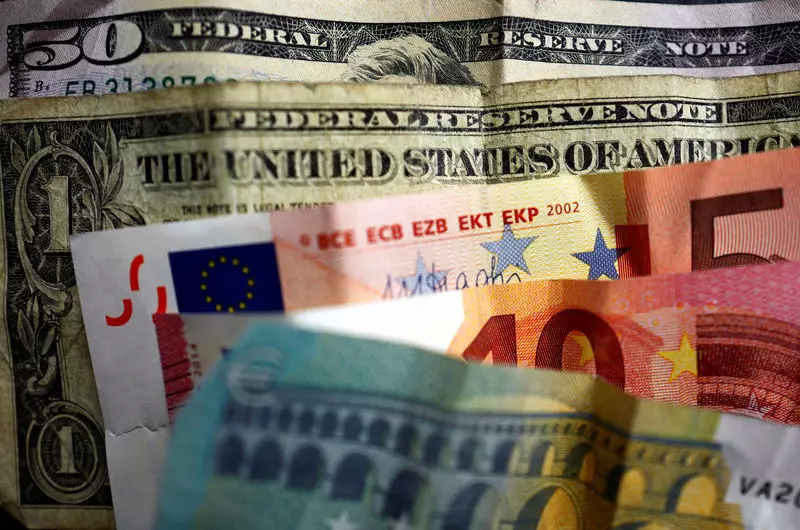The forex market is a dynamic landscape, constantly influenced by economic indicators, central bank decisions, and geopolitical events. Recently, the U.S. dollar experienced a notable decline amidst a backdrop of significant monetary policy shifts, particularly ahead of the anticipated rate-cutting cycle from the Federal Reserve. This article delves into the fluctuating currency values, the impact of central bank policies, and the overall sentiment driving traders in this volatile market.
On Monday, the Dollar Index, which offers a composite measure of the greenback against six major currencies, dropped by 0.4% to 100.357. The decline can be attributed to investor speculation regarding an imminent rate cut from the Federal Reserve. The Fed’s policy-setting meeting, set to conclude on Wednesday, is expected to result in a reduction of rates from the current 5.25%-5.5% range that has remained stable for over a year. This anticipated shift arises following a decrease in the U.S. consumer price index, which recently fell to its lowest level since early 2021, instigating discussions on the necessity for a more accommodative monetary stance.
Traders are carefully analyzing these monetary developments, weighing the potential magnitude of the Fed’s rate cut. Recent media reports have amplified speculation about a substantial 50-basis-point cut, leading to a notable weakening of the dollar. According to futures market indications, there exists around a 59% chance for such a significant decrease at the upcoming meeting, revealing the degree of speculation surrounding the Fed’s next moves.
Compounding the dollar’s weakness, U.S. Treasury yields have resumed their decline, with benchmark 10-year yields slipping approximately 30 basis points over a two-week period. The relationship between interest rate cuts and Treasury yields is pivotal; as the Fed signals a potential easing of monetary policy, yields often retrench in anticipation of lower returns on fixed-income investments. This trend underscores the direct influence that the Federal Reserve’s decisions have on the broader financial markets and how shifts in policy can significantly alter investor sentiment.
Following the Fed’s announcement, markets will be keenly focused on the post-meeting press conference led by Chairman Jerome Powell. This event could serve as a critical moment for market participants, as Powell’s insights may shape expectations regarding future interest rates and overall economic recovery.
Amidst the dollar’s decline, the euro and sterling demonstrated resilience on Monday. The EUR/USD pair climbed 0.4% to 1.1115, reflecting increasing demand for the single currency despite previous cuts by the European Central Bank (ECB). ECB President Christine Lagarde’s recent remarks dampened expectations for further rate reductions in the near future by emphasizing a “meeting by meeting” approach rather than committing to a predetermined path.
Simultaneously, the GBP/USD surged by 0.4% to 1.3173, indicating strong performance ahead of the upcoming Bank of England meeting. Analysts from ING highlighted that the softness of the dollar is a significant factor driving sterling’s strength, alongside a relative absence of negative news affecting the UK economy. This indicates an ongoing trend where currencies outside the U.S. are gaining ground against the dollar.
Equally noteworthy is the yen’s rise, which increased by 0.8% against the dollar, reaching levels not seen in over eight months. Anticipation surrounding the Bank of Japan’s meeting adds to this movement despite expectations that the short-term rate will remain unchanged at 0.25%. However, BOJ officials have expressed a willingness to consider higher rates, a potential pivot that could reshape market behavior, especially concerning yen-funded carry trades.
With muted trading volumes stemming from market holidays in Asia, the stability of the USD/CNY pair signifies a broader temporary pause in maneuvers as traders await significant developments from central bank meetings.
The current forex environment is characterized by a pronounced shift against the U.S. dollar amid evolving central bank strategies. As the Federal Reserve gears up for a policy shift, the implications for global currencies remain profound. Investors and traders must navigate this volatility with care, keeping a close eye on future economic indicators and monetary policy announcements that will undoubtedly shape the currency markets for months to come. The interplay of ECB and BOJ actions alongside U.S. monetary policy will ultimately dictate the trajectory of the dollar and its global counterparts.

